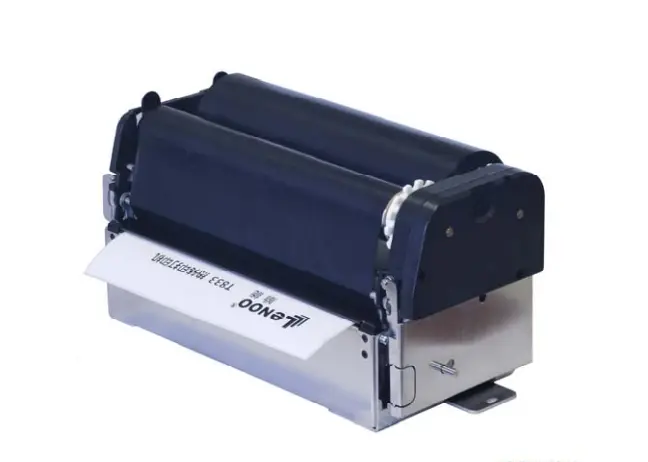What is the Expected Lifespan of a Heat Transfer Printer?
The durability of heat transfer printers is significantly influenced by advancements in technology and operational practices. Manufacturers focus on improving thermal stability and material compatibility to extend the lifespan of these devices. Regular maintenance checks, the use of certified materials, and ensuring a controlled operating environment are key strategies. Real-world use cases often highlight the importance of consistent temperature and humidity levels, emphasizing the need for preventive maintenance routines and comprehensive training programs for operators. Integrating predictive maintenance technologies, such as real-time monitoring through IoT sensors, can further enhance durability by identifying potential issues before they become critical.
Maintenance Requirements for Heat Transfer Printers
Maintaining a heat transfer printer involves several key steps to ensure optimal performance and longevity. Regular cleaning of the printing head, using specialized solutions, and running scheduled maintenance print jobs can prevent nozzle clogs and maintain print quality. It is crucial to keep the printer calibrated and to use recommended inks and substrates. Environmental factors, including temperature and humidity, significantly impact printer performance, necessitating controlled conditions through the use of dehumidifiers and air filters. Different substrates, such as polyester or metal, require specific care: gentle cleaning solutions for polyester to prevent ink degradation and precise temperature control for metal substrates. Implementing a regular maintenance routine tailored to the substrate being used can effectively extend the lifespan and ensure optimal results.

Environmental Factors Impacting Heat Transfer Printers
Environmental factors significantly influence the lifespan of heat transfer printers. High humidity levels can lead to corrosion of internal components, thereby reducing the printer's operational life. Conversely, exposure to extreme temperatures can affect thermal stability and print quality, necessitating rigorous maintenance routines. Regular cleaning, the use of desiccants, and implementing power management settings to reduce idle power consumption are crucial strategies to mitigate these issues. Manufacturers have introduced advanced humidity-resistant coatings and enhanced thermal management systems to improve printer durability in diverse environments. Users can also adopt best practices such as using dehumidifiers in humid conditions and adhering to recommended maintenance schedules to ensure optimal performance and longevity.
Lifespan of Heat Transfer Printers
The lifespan of heat transfer printers is significantly influenced by a variety of factors, including technological advancements and user maintenance practices. Modern printers benefit from improvements in printhead technology and ink quality, offering faster print speeds and better color retention. Regular maintenance, such as cleaning the printhead and ensuring proper ink viscosity and temperature settings, plays a crucial role in extending the printer's lifespan. Different substrates and environmental conditions can also impact performance; thick, textured, or highly absorbent materials can clog printheads, while controlled environmental settings with stable temperature and humidity levels help maintain print quality. Smart diagnostics and predictive maintenance, utilizing IoT and AI, further enhance operational efficiency by identifying potential issues before they become critical. Integration with cloud-based platforms not only optimizes energy consumption and facilitates better data sharing for recycling and disposal practices but also ensures consistent print quality and minimizes downtime.
Common Wear and Tear Factors in Heat Transfer Printers
Common wear and tear factors in heat transfer printers include the quality of materials used, which can degrade over time if not handled properly, especially under temperature extremes. Consistent exposure to high temperatures and rapid temperature changes can cause ink to degrade and substrates to warp, leading to mechanical stress on printer components. Additionally, environments with extreme humidity levels can introduce moisture that may lead to mold and mildew growth on print heads, diminish print quality, and reduce the overall lifespan of the printer. Dry environments, on the other hand, can generate static electricity, contributing to poor print quality and paper jams. Regular maintenance, such as proper calibration, cleaning, and the use of recommended printer settings, can mitigate these issues. Ensuring a climate-controlled environment and employing anti-static and humidity-regulating solutions further enhances the longevity and performance of heat transfer printers.
Usage Patterns Impacting Heat Transfer Printer Durability
Usage patterns significantly influence the durability of heat transfer printers. The type and thickness of the printing materials, along with their heat resistance, play crucial roles. Thicker materials and those with high heat resistance require higher temperature settings, which can stress the printer's components over time, potentially leading to faster wear and overheating. Effective management of heat through advanced thermal systems and cooling methodologies is essential. Regular maintenance routines, including routine checks on cooling systems and the use of specialized cooling fans, are crucial for optimal performance and longevity. Post-processing techniques, such as quenching or other cooling methods, further manage heat retention and improve print quality. Predictive maintenance and real-time monitoring also contribute to enhancing durability by allowing proactive management of maintenance and energy consumption, thereby balancing performance with sustainability. Efficient cooling and energy-saving features, such as LED lighting and toner cartridge recycling, further support these goals without compromising on quality or longevity.









